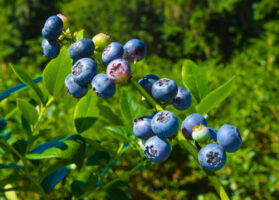Agronometrics in Charts: The Upcoming Bountiful US Apple Season
In this installment of the ‘Agronometrics In Charts’ series, Sarah Ilyas studies the state of the US apple season. Each week the series looks at a different horticultural commodity, focusing on a specific origin or topic visualizing the market factors that are driving change.
Washington stands at the precipice of yet another apple harvest season. Experts project an upswing in apple production reaching close to 120 million cases. Last year, Washington produced 100 million cases, which was a decrease of 15 percent over the five-year average. The notable surge in volume can be attributed to the incorporation of novel, high-density orchards. Distinguished by their strategic planting densities and adoption of advanced agricultural methodologies, these orchards have emerged as a pivotal driving force in elevating the yield potential of Washington’s apple harvest; the state also experienced an exceptionally favorable bloom at the start of the year. Despite a slight hike in summer temperatures, the overall projection remains positive.

Source: USDA Market News via Agronometrics.
(Agronometrics users can view this chart with live updates here)
In contrast to Washington, the Midwest experienced a highly successful production year in 2022. Michigan, in particular, achieved an impressive apple harvest, reaching approximately 30 million cases, nearly doubling the amount harvested in 2021. While it is common for a bountiful crop year to be followed by a less fruitful one, the Midwest seems poised to defy this trend due to the establishment of numerous new high-density orchards throughout the region. Don Roper of Honeybear Marketing anticipates Michigan’s production to be close to 28 or 29 million cases, with encouraging yield prospects observed throughout the entire Midwest.

Source: USDA Market News via Agronometrics.
(Agronometrics users can view this chart with live updates here)
In New York, the apple harvest commences in the Hudson Valley and its immediate environs in mid-August, followed by central and western New York approximately a week or two thereafter. The harvest culminates in northeast New York, presenting a well-orchestrated seasonal rhythm across the state’s apple-growing landscape.
The East Coast encountered a significant freeze in late April that had an adverse impact on the bloom across Eastern New York and extended down through the Hudson Valley. In the preceding year, the East Coast yielded a total of 32 million bushels of apples; however, this year, New York growers are anticipating a slightly reduced harvest of just over 29 million bushels, reflecting a decline of approximately 12 percent. Nonetheless, it is noteworthy that since spring, the region has been graced with favorable growing conditions, with no discernible impediments hindering fruit production.
Upon amalgamating the anticipated volumes from the three growing regions, Roper envisages an encouraging upswing in US apple production, projecting a minimum increase of 10 percent over last year’s yield. Nevertheless, it is essential to acknowledge that projections remain subject to change, as one-third of the growing season still remains.

Source: USDA Market News via Agronometrics.
(Agronometrics users can view this chart with live updates here)

Source: USDA Market News via Agronometrics.
(Agronometrics users can view this chart with live updates here)
The consequences of the short US apple crop in the preceding year elicited a significant surge in prices. The average retail price for apples in 2022 increased by 15 percent when juxtaposed with the figures of 2021. The evident driver behind this price surge lay in the diminished volume of apples available for distribution, which, in turn, prompted retailers to curtail promotional activities.
The landscape for the upcoming season embraces a more sanguine outlook. An anticipated larger apple volume increases the likelihood of heightened price competition within the market. Consequently, an atmosphere ripe for increased promotional activities emerges, facilitated by the increased availability of apples. Retailers, keenly attuned to the evolving supply and demand dynamics, are poised to adopt a strategic deflation approach, artfully maneuvering the market equilibrium in the quest for optimal outcomes.

Source: USDA Market News via Agronometrics.
(Agronometrics users can view this chart with live updates here)
In our ‘In Charts’ series, we work to tell some of the stories that are moving the industry. Feel free to take a look at the other articles by clicking here.
All pricing for domestic US produce represents the spot market at Shipping Point (i.e. packing house/climate controlled warehouse, etc.). For imported fruit, the pricing data represents the spot market at Port of Entry.
You can keep track of the markets daily through Agronometrics, a data visualization tool built to help the industry make sense of the huge amounts of data that professionals need to access to make informed decisions. If you found the information and the charts from this article useful, feel free to visit us at www.agronometrics.com where you can easily access these same graphs, or explore the other 21 commodities we currently track.
Written by: Sarah Ilyas






